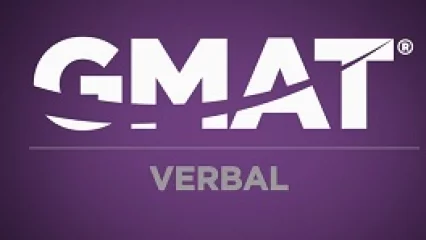As you will find out from this video, from the new GMAT tutorial series produced by PrepAdviser and examPAL, in these types of questions you will be presented with a short academic passage, two or three paragraphs long. You will be asked three or four consecutive questions about it. You should expect to see about four passages in each Verbal section, making for about 12-16 questions out of a total of 37.
Check out: GMAT Tutorials: GMAT Quant – Data Sufficiency (Video)
These questions are the only ones on the GMAT which are not adaptive – the questions that come with each passage are set and will not change according to your performance. However, the passages themselves, as a whole, are adaptive – the ones you see will depend on how you are doing in the test up until that point.
So, what do you need in order to succeed in this type of question? Three things are needed for success:
- Quick reading
- Speedy analysis
- Time-saving problem-solving strategy
Let’s talk about these three skills, one by one:
First of all – reading.
The first thing you need to do is read the entire passage – and since each passage is 200-250 words, and time is especially tight in the Verbal section – you had better do this quickly! This means you need to work on your speed-reading ability. That is especially the case if you are a non-native English speaker, but also if you are a native speaker who is unfamiliar with academic writing. Thus, you should spend at least 75 consecutive minutes every day for at least a few weeks before the exam reading articles from popular science or business magazines. This is the time you have at your disposal to complete the Verbal section.
Since time is short, you cannot afford to first read and only then start thinking about what you just read. Academic reading is very different from reading literature, where you can read leisurely and wait until you have gotten to the end of a text to reflect on how it made you feel. Here, you need to analyze what you are reading while you are reading it. The method we recommend to accomplish this is that of Active Reading: while reading the passage, stop every sentence or two to make sure you understood what you have just read, ask yourselves questions to make sure you understand how one paragraph connects to the other, and most importantly, take short notes about the main message of each paragraph or sentence.
Check out: How to Improve GMAT Reading Comprehension (Video)
You will continually ask yourself: what has the passage told me until now? How did what I just read connect to everything that came before it? To do this, it is extremely helpful to pay attention to connecting words. Negative connectors such as “however”, “although”, and “instead” signal that one idea contradicts or weakens another, while positive connectors such as “furthermore”, “additionally”, and “moreover” signal that one idea builds upon or strengthens another.
The third thing you must do is approach Reading Comprehension passages strategically: first of all, read the whole text, and only address the questions after you are done. Second, use different strategies for different types of questions:
- If the question refers to a specific place in the passage – great! No need to waste time reading the answers, you can use the Precise approach and extract the answer straight from the text.
- If you are not sure what you are looking for, you can use the Alternative approach and just eliminate the wrong answers. For example, you may want to do this if you are asked “what would be an appropriate title for this passage?” Thinking of a title on your own makes less sense than comparing the answers.
A word of caution, though – you will only do this when you have to, since reading answers is both time-consuming and confusing, as the different answer choices can be very persuasive.
- Finally, you may need to use the Logical approach in questions which require you to analyze the claim made in the argument. If, for example, you are asked about evidence that would weaken or strengthen an argument made in the passage, you need to think logically about what it is the passage is claiming.
So the bottom line is that since lack of time is the number one “killer” in the Verbal section, and Reading Comprehension requires lots of reading, you must read fast, read as little as you can, and apply the best solution strategy.


